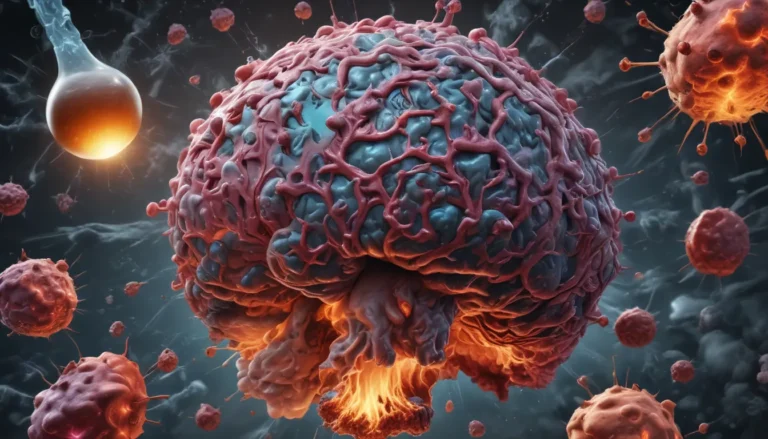A Note About Images: The images used in our articles are for illustration purposes only and may not exactly match the content. They are meant to engage readers, but the text should be relied upon for accurate information.
Are you ready to dive into the captivating world of bioinformatics? This rapidly evolving field, situated at the confluence of biology, computer science, and statistics, holds the key to unraveling the mysteries of life on a molecular level. From personalized medicine to drug discovery, bioinformatics plays a vital role across various domains. In this article, we will embark on a journey to explore 19 astounding facts about bioinformatics that showcase its significance and impact in diverse arenas. Get ready to be amazed by the incredible realm of bioinformatics as we uncover these fascinating facts!
The Science Behind Bioinformatics
Bioinformatics is a multidisciplinary science that encompasses the collection, analysis, and interpretation of biological data using computational tools. By integrating biology, computer science, and statistics, bioinformatics unravels complex biological phenomena and sheds light on the intricate workings of living organisms.
Revolutionizing Genomics, Proteomics, and Drug Discovery
Bioinformatics plays a crucial role in advancing genomics, proteomics, and drug discovery. By analyzing DNA, RNA, and protein sequences, bioinformaticians can identify genes, predict protein structures, and facilitate the development of novel therapeutic agents.
Human Genome Project: A Landmark Achievement
The completion of the Human Genome Project in 2003 marked a significant milestone in bioinformatics. This ambitious endeavor aimed to sequence and map all the genes in the human genome, paving the way for groundbreaking advancements in medical research.
Studying Evolutionary Relationships
Bioinformatics tools are instrumental in studying evolutionary relationships between organisms. By comparing genetic sequences, scientists can investigate the evolutionary history and relatedness of different species, unraveling the intricate tapestry of life’s diversity.
Applications Across Diverse Fields
From personalized medicine to forensic science, bioinformatics finds myriad applications across a range of disciplines, showcasing its versatility and transformative potential.
Personalized Medicine: Tailoring Treatments to Genetic Variations
Bioinformatics has revolutionized personalized medicine by leveraging an individual’s genomic data to tailor treatment plans. This personalized approach improves the efficacy and precision of therapies by accounting for specific genetic variations.
Metagenomics: Exploring Microbial Communities
The field of metagenomics harnesses bioinformatics to study microbial communities in various environments. By identifying and analyzing microorganisms in soil, water, and the human gut, scientists gain insights into the complex interactions within these ecosystems.
Forensic Science: Unraveling Mysteries with DNA Evidence
Bioinformatics plays a pivotal role in forensic science by analyzing DNA evidence to aid in criminal investigations. By comparing DNA profiles, forensic scientists can link suspects to crime scenes, contributing to the resolution of complex cases.
Next-Generation Sequencing: Catalyzing Bioinformatics Research
The development of next-generation sequencing technologies has accelerated bioinformatics research by generating vast amounts of genomic data. These advanced sequencing techniques necessitate powerful computational tools for data analysis, driving innovation in the field.
Predicting Protein Structure and Function
Bioinformatics algorithms are utilized to predict protein structure and function, offering insights into how proteins operate and their implications in diseases. These predictions facilitate drug discovery and the design of targeted therapeutic interventions.
Enhancing Agricultural Research
Bioinformatics plays a pivotal role in agricultural research by analyzing plant genomes to improve crop yield and resistance to diseases. By identifying genes responsible for desirable traits, scientists can develop strategies for enhancing crop productivity.
Transcriptomics: Deciphering Gene Expression Patterns
The study of transcriptomics employs bioinformatics tools to analyze gene expression patterns, shedding light on how genes are activated or suppressed under different conditions. This field provides valuable insights into the regulation of gene expression.
Revolutionizing Microbiology
Bioinformatics has revolutionized microbiology by enabling the identification and categorization of microbial species. Microbial genomics enhances our understanding of microbial diversity, evolution, and ecological functions, shaping our knowledge of the microbiome.
Exploring New Frontiers in Bioinformatics
As technology advances and new data emerges, bioinformatics continues to evolve, driving innovation and pushing boundaries in research and discovery.
Predicting Drug-Target Interactions
Bioinformatics algorithms are employed to predict potential drug-target interactions, aiding in drug discovery and the design of more effective and selective therapies. By analyzing drug databases and biological networks, researchers can identify promising candidates for repurposing existing drugs.
Understanding Complex Diseases
Bioinformatics plays a vital role in elucidating complex diseases such as cancer and neurological disorders. By analyzing genomic and clinical data, researchers can unravel the underlying mechanisms of these diseases, leading to improved diagnosis and therapeutic strategies.
Bridging the Gap in Synthetic Biology
Bioinformatics contributes to synthetic biology by facilitating the design of novel genetic circuits for various applications. This burgeoning field aims to engineer biological systems for biomanufacturing, bioenergy production, and other innovative endeavors, leveraging bioinformatics for design and optimization.
Environmental Applications: Monitoring Ecosystem Health
Bioinformatics finds applications in environmental research by monitoring and predicting the impact of pollution on ecosystems. By analyzing DNA and RNA sequences, scientists can assess the health of ecosystems, develop conservation strategies, and safeguard biodiversity.
Advancements in Machine Learning and Artificial Intelligence
Bioinformatics is at the forefront of advancements in machine learning and artificial intelligence, enhancing the analysis of large-scale biological data and improving predictive models. These technologies empower researchers to extract meaningful insights from complex datasets and accelerate scientific discovery.
Embracing the Future of Bioinformatics
Bioinformatics continues to astonish with its limitless potential, offering a treasure trove of knowledge and opportunities for exploration. As we delve deeper into this captivating field, we uncover a world of innovation and discovery that promises to shape the future of biomedical research and beyond.
FAQs
- What is bioinformatics?
-
Bioinformatics combines biology, computer science, and statistics to analyze biological data and discover new insights and patterns.
-
How is bioinformatics used in genomics?
-
Bioinformatics is essential in genomics for sequencing and annotating genomes, studying genetic variations, and understanding gene and protein functions.
-
Can bioinformatics aid in drug discovery?
-
Yes, bioinformatics plays a significant role in drug discovery by identifying drug targets, predicting biological activities, and analyzing drug effects.
-
Does bioinformatics contribute to personalized medicine?
-
Absolutely! Bioinformatics helps analyze an individual’s genomic information for personalized diagnosis, treatment selection, and prognosis.
-
In what other fields is bioinformatics applied?
-
Bioinformatics finds applications in evolutionary biology, microbiology, agriculture, and environmental sciences, among others.
-
What are the challenges faced in bioinformatics?
-
Challenges include managing vast biological data, developing efficient algorithms, and adapting to technological advancements.
-
How can one pursue a career in bioinformatics?
- Pursue a career in bioinformatics by obtaining a degree in bioinformatics, genetics, computer science, or related fields, gaining hands-on experience with bioinformatics tools.
Conclusion: Unraveling the Mysteries of Bioinformatics
Bioinformatics is a dynamic field that intertwines biology, computer science, and statistics to decode the complexities of biological data. From sequencing genomes to predicting protein structures, bioinformatics underpins groundbreaking discoveries in diverse fields. The 19 astounding facts about bioinformatics underscore its profound impact on research, innovation, and the understanding of life itself.
As we navigate the ever-expanding landscape of bioinformatics, we are met with endless possibilities for exploration and discovery. By embracing the tools and technologies that bioinformatics offers, we embark on a journey of knowledge and innovation that continues to redefine the boundaries of scientific inquiry. With each new revelation and advancement in bioinformatics, we uncover the secrets of the natural world and pave the way for a future filled with promise and potential.
Let the captivating realm of bioinformatics inspire you to embark on a voyage of discovery, where each fact and insight unveils a new facet of this fascinating discipline. As we delve deeper into the wonders of bioinformatics, we celebrate the boundless opportunities it presents and the transformative impact it has on our understanding of life’s intricate tapestry. Join us on this exhilarating journey as we explore the remarkable world of bioinformatics and unlock the secrets it holds.
Immerse yourself in the captivating world of bioinformatics, where science meets technology to unravel the mysteries of life. Join us on this extraordinary journey of discovery and innovation as we explore the fascinating facts that define the field of bioinformatics. Let the wonders of bioinformatics inspire you to delve deeper into the realm of possibilities and embark on a voyage of knowledge and exploration. Discover the boundless potential of bioinformatics and witness the incredible advancements that shape the future of scientific inquiry.






